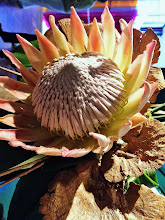First strolling through the well displayed and arrayed exhibit about the Boy King, starting actually long before the titular center of the show, we ended up in a lecture about the Gardens of Paris, an adjunct lecture the the current exhibit at the MFA.
| Parc Monceau, Paris |
a formidable example of excesses of luxury is the "lit a laTurque"on loan from the Getty Museum
since shortly after, Madame Guillotine and the Sans Culotes took over life in France for while until Napoleon!
But back to Egypt and its most seductive Pharaoh.. the boy king Tutankhamen, who died young.
Ever since Carter discovered his tomb and the huge treasures in it
we have lusted for more information on this gilded boy.
Several years ago a similar exhibit toured here and was a similar success - for the reason stated above. AND boy did we get it! Including to an array of trinkets, headcoverings, magnates, imitation jewelry, books, and more - all for sale at the cunningly located exhibition gift shop at the end. One simply could not avoid it!
Yes, Tut's mummy stays in Egypt, but through advances in medicinal research we are credibly informed (at the exhibit via video) that TUT's papa was Akhnaton, the revolutionary founder of the Sun=Aten religion, whose colossal statue is featured in the show, as well as other rulers of 30 dynasties that reigned in Egypt over 2,000-year, such as the Pharaoh - queen Hatshepsut
and we see one of her statues.
And there is the sarcophagus of Tutmosis' cat
| the simple wooden bed |
the numerous attendants to the court, the importance of scribes, and architects... all Pharaohs upon coronation immediately start building tombs.
The expectations of an after life with all the luxuries (represented by miniature, even life sized, funereal gifts which upon rebirth would miraculously spring to life as the full sized boat, servants etc.) certainly caught our imagination. And the bed which is rather plain and simple-compare that to the bed of 18th Paris? :-)!! But never fear there was also found a gilded bed in the tomb... not on display here!
The huge number of shabtis
And a thoroughly modern looking item
I went back several times to look at it, walk around it to admire its simplicity and clean lines.
A trip well worth taking!

1 comment:
Sounds good. Must add to my to-do list with the kids.
Post a Comment